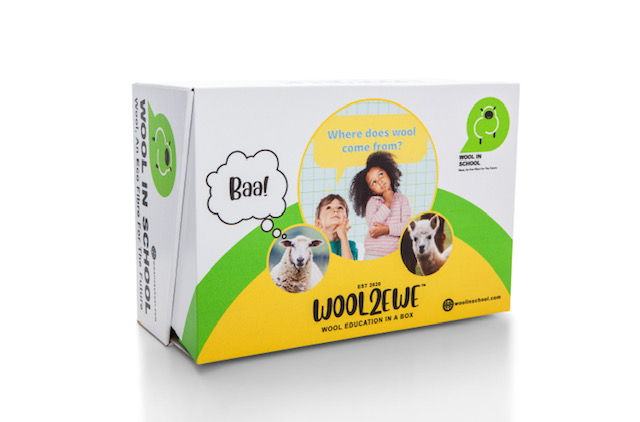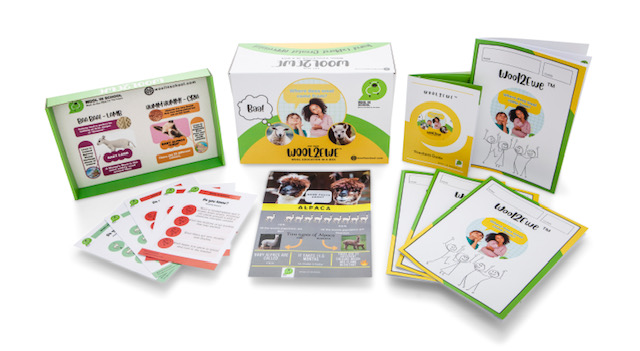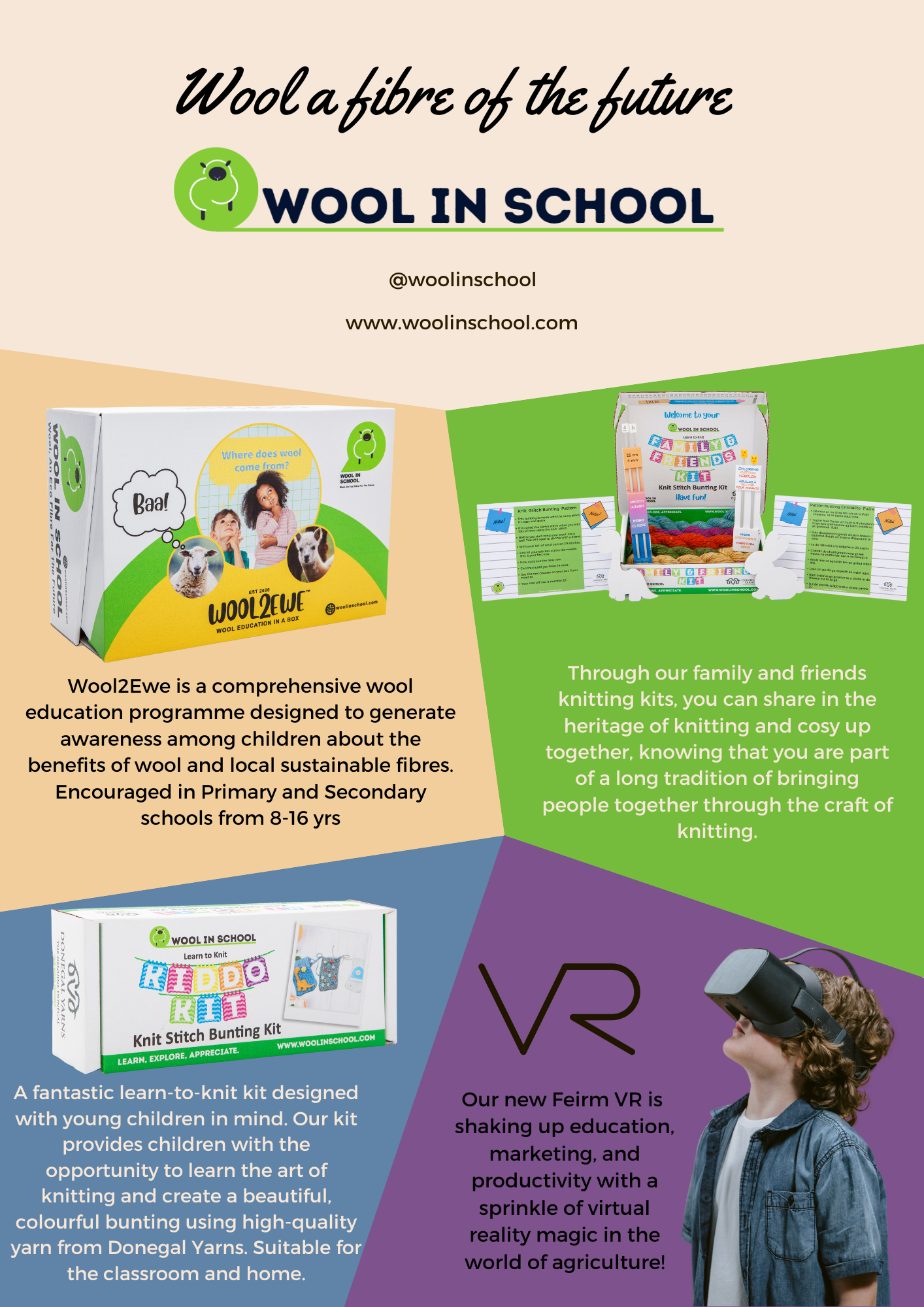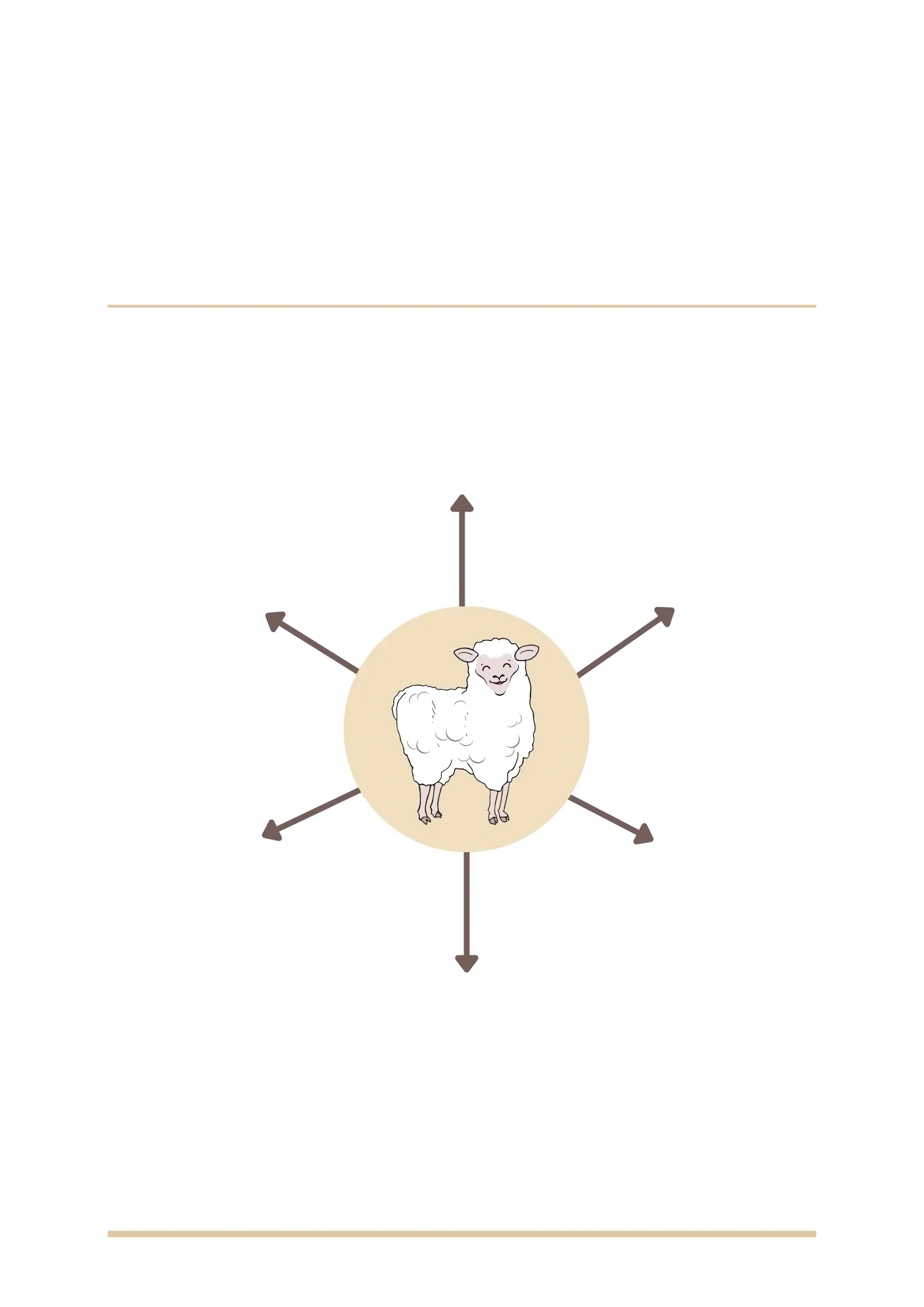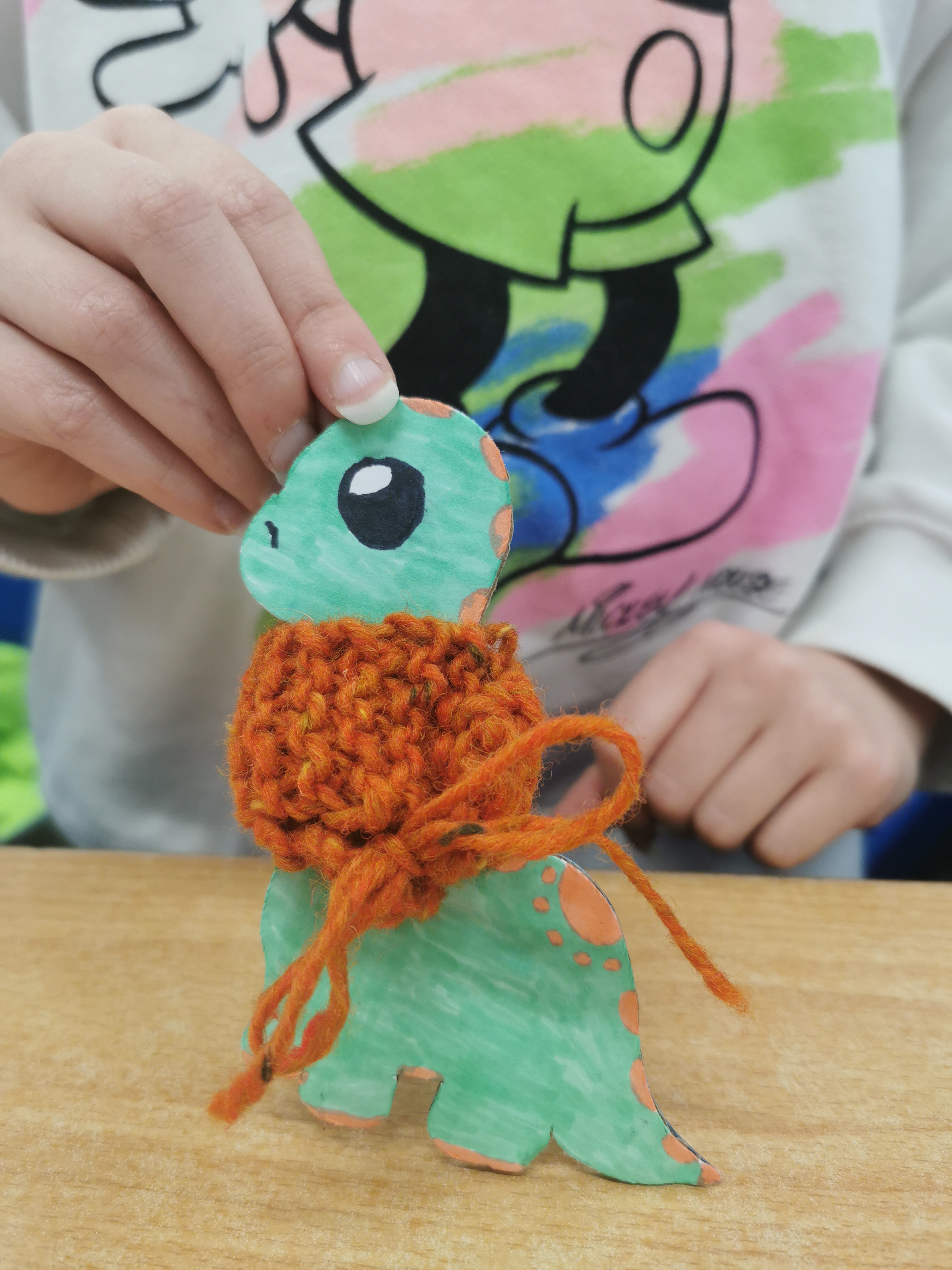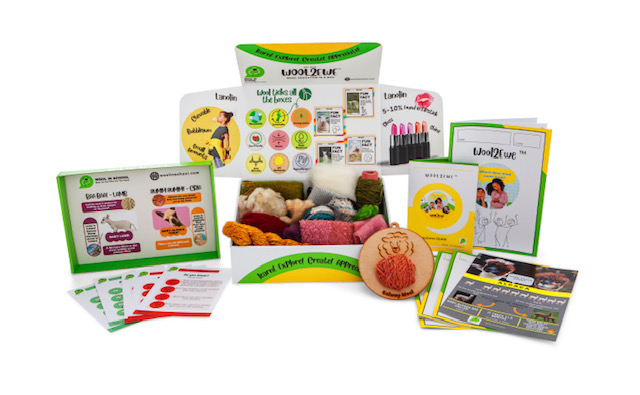Reconnecting with nature
Woo2Ewe
Wool2Ewe Programme
The Woo2Ewe programme is forward-thinking education designed to bridge the gap between climate education and sustainable living by showcasing the remarkable benefits of wool as a natural, renewable resource. As a champion of climate action, Woo2Ewe empowers children to rethink their relationship with textiles and embrace wool as a powerful tool for reducing waste, supporting critical thinking and stewardship in young people, and combating the environmental impacts of synthetic fibers.
Ireland
National
It addresses urban-rural linkages
It refers to other types of transformations (soft investment)
Yes
2023-09-27
Yes
ESD Funding Department of Education 2024
Minister Norma Foley
No
No
As a representative of an organisation
Key Objectives of Woo2Ewe in Terms of Sustainability
Promote Natural and Renewable Materials
Objective: Educate communities about wool’s eco-friendly properties as a renewable, biodegradable, and sustainable alternative to synthetic fibers.
Foster a Circular Economy
Objective: Encourage waste reduction by emphasizing the recyclability and composability of wool products.
Promote Behavioural Change Toward Sustainability
Objective: Drive behaviour change by linking wool education to broader climate awareness, such as the impact of fast fashion and microplastic pollution.
A key focus of Woo2Ewe is to demonstrate the broader climate benefits of wool.
Promote Natural and Renewable Materials
Objective: Educate communities about wool’s eco-friendly properties as a renewable, biodegradable, and sustainable alternative to synthetic fibers.
Foster a Circular Economy
Objective: Encourage waste reduction by emphasizing the recyclability and composability of wool products.
Promote Behavioural Change Toward Sustainability
Objective: Drive behaviour change by linking wool education to broader climate awareness, such as the impact of fast fashion and microplastic pollution.
A key focus of Woo2Ewe is to demonstrate the broader climate benefits of wool.
sustainability
climate action
education
circular economy
intergenerational equity
The Woo2Ewe programme is a forward-thinking initiative designed to bridge the gap between climate education and sustainable living by showcasing the remarkable benefits of wool as a natural, renewable resource. As a champion of climate action, Woo2Ewe empowers children to rethink their relationship with fashion, textiles and the environment while embracing wool as a powerful tool for reducing waste, supporting local economies, and combating the environmental impacts of synthetic fibers. At its core, Woo2Ewe is about education and empowerment.
Key Objectives of Woo2Ewe in Terms of Sustainability
Promote Natural and Renewable Materials
Objective: Educate communities about wool’s eco-friendly properties as a renewable, biodegradable, and sustainable alternative to synthetic fibres.
Foster a Circular Economy
Objective: Encourage waste reduction by emphasizing the recyclability and composability of wool products.
Promote Behavioural Change Toward Sustainability
Objective: Drive behaviour change by linking wool education to broader climate awareness, such as the impact of fast fashion and microplastic pollution.
A key focus of Woo2Ewe is to demonstrate the broader climate benefits of wool. The programme connects schools with the farmers, artisans, and producers who are at the heart of sustainable wool production.
This Wool2Ewe programme is about encouraging stewardship and green skills in children about wool and sustainability with a focus on skills and actionable outcomes. By linking these practices to the broader goals of climate action, the Woo2Ewe programme inspires individuals to make more sustainable choices in their daily lives.
Key Objectives of Woo2Ewe in Terms of Sustainability
Promote Natural and Renewable Materials
Objective: Educate communities about wool’s eco-friendly properties as a renewable, biodegradable, and sustainable alternative to synthetic fibers.
Key Objectives of Woo2Ewe in Terms of Sustainability
Promote Natural and Renewable Materials
Objective: Educate communities about wool’s eco-friendly properties as a renewable, biodegradable, and sustainable alternative to synthetic fibres.
Foster a Circular Economy
Objective: Encourage waste reduction by emphasizing the recyclability and composability of wool products.
Promote Behavioural Change Toward Sustainability
Objective: Drive behaviour change by linking wool education to broader climate awareness, such as the impact of fast fashion and microplastic pollution.
A key focus of Woo2Ewe is to demonstrate the broader climate benefits of wool. The programme connects schools with the farmers, artisans, and producers who are at the heart of sustainable wool production.
This Wool2Ewe programme is about encouraging stewardship and green skills in children about wool and sustainability with a focus on skills and actionable outcomes. By linking these practices to the broader goals of climate action, the Woo2Ewe programme inspires individuals to make more sustainable choices in their daily lives.
Key Objectives of Woo2Ewe in Terms of Sustainability
Promote Natural and Renewable Materials
Objective: Educate communities about wool’s eco-friendly properties as a renewable, biodegradable, and sustainable alternative to synthetic fibers.
Key Objectives of Woo2Ewe in Terms of Aesthetics and Quality of Experience (Focused on Sustainability and Climate Change)
Showcase Wool as a Climate-Friendly Material
Objective: Highlight the sustainable and eco-friendly qualities of wool through design, demonstrating its role in mitigating climate change.
Promote Connection to Nature Through Design
Objective: Foster a deeper appreciation of natural materials by emphasising wool’s connection to ecosystems and sustainable farming practices.
Create Engaging, Climate-Centred Experiences
Objective: Provide participants with inspiring and tangible ways to address climate change through wool-based creativity and innovation.
Celebrate Wool as a Cultural and Sustainable Resource
Objective: Highlight wool’s historical and cultural significance while linking it to modern sustainability practices.
Inspire Creative Climate Solutions Through Design
Objective: Demonstrate how innovative design using wool can be part of the solution to global environmental challenges.
Exemplary Aspects of the Project
Aesthetic Sustainability: Woo2Ewe reframes climate-conscious choices as elegant and desirable, showcasing wool’s beauty alongside its environmental benefits.
Hands-On Climate Education: Through interactive experiences, the programme transforms abstract sustainability concepts into tangible, memorable activities that inspire change.
Cultural Sustainability: By connecting wool’s cultural heritage to its role in modern climate solutions, Woo2Ewe ensures traditions are celebrated while addressing global challenges.
Circular Design Focus: The programme emphasizes creating and maintaining a circular economy, offering practical ways to reduce waste and extend product lifecycles.
Inspiration Through Creativity: Woo2Ewe inspires participants to view climate action as an opportunity for innovation, creativity and sustainability.
Showcase Wool as a Climate-Friendly Material
Objective: Highlight the sustainable and eco-friendly qualities of wool through design, demonstrating its role in mitigating climate change.
Promote Connection to Nature Through Design
Objective: Foster a deeper appreciation of natural materials by emphasising wool’s connection to ecosystems and sustainable farming practices.
Create Engaging, Climate-Centred Experiences
Objective: Provide participants with inspiring and tangible ways to address climate change through wool-based creativity and innovation.
Celebrate Wool as a Cultural and Sustainable Resource
Objective: Highlight wool’s historical and cultural significance while linking it to modern sustainability practices.
Inspire Creative Climate Solutions Through Design
Objective: Demonstrate how innovative design using wool can be part of the solution to global environmental challenges.
Exemplary Aspects of the Project
Aesthetic Sustainability: Woo2Ewe reframes climate-conscious choices as elegant and desirable, showcasing wool’s beauty alongside its environmental benefits.
Hands-On Climate Education: Through interactive experiences, the programme transforms abstract sustainability concepts into tangible, memorable activities that inspire change.
Cultural Sustainability: By connecting wool’s cultural heritage to its role in modern climate solutions, Woo2Ewe ensures traditions are celebrated while addressing global challenges.
Circular Design Focus: The programme emphasizes creating and maintaining a circular economy, offering practical ways to reduce waste and extend product lifecycles.
Inspiration Through Creativity: Woo2Ewe inspires participants to view climate action as an opportunity for innovation, creativity and sustainability.
Design for All Principles
Objective: Create experiences and materials that cater to diverse needs, abilities, and cultural contexts, promoting inclusivity in design and education.
Accessibility and Affordability
Objective: Ensure that sustainability education and wool-based activities are accessible and affordable to diverse communities, regardless of socioeconomic background. Providing discounts for DEIS schools in Ireland.
Objective: longevity of the programme, schools will have access to the programme for 5 or more years.
nclusive Governance and Participation
Objective: Foster collaborative decision-making and include diverse voices in shaping the programme, ensuring that it reflects the needs and aspirations of the communities/ schools it serves.
Promoting New Societal Models
Objective: Advocate for community-driven, sustainable lifestyles that prioritize equity, collaboration, and environmental stewardship.
Cultural Sensitivity: The programme respects and incorporates local traditions and diverse perspectives, creating a model of sustainability that is inclusive and relatable.
Multi-Level Accessibility: From physical accommodations to multilingual and skill-adapted resources, Woo2Ewe ensures that all participants can engage meaningfully.
Community-Driven : Woo2Ewe exemplifies inclusive leadership by actively involving stakeholders in the decision-making process, that genuinely reflect the needs of its audience i.e children.
Equity in Climate Action: By spotlighting marginalised communities and their contributions, Woo2Ewe demonstrates how inclusivity strengthens collective sustainability efforts. (Working with Deaf communities)
Objective: Create experiences and materials that cater to diverse needs, abilities, and cultural contexts, promoting inclusivity in design and education.
Accessibility and Affordability
Objective: Ensure that sustainability education and wool-based activities are accessible and affordable to diverse communities, regardless of socioeconomic background. Providing discounts for DEIS schools in Ireland.
Objective: longevity of the programme, schools will have access to the programme for 5 or more years.
nclusive Governance and Participation
Objective: Foster collaborative decision-making and include diverse voices in shaping the programme, ensuring that it reflects the needs and aspirations of the communities/ schools it serves.
Promoting New Societal Models
Objective: Advocate for community-driven, sustainable lifestyles that prioritize equity, collaboration, and environmental stewardship.
Cultural Sensitivity: The programme respects and incorporates local traditions and diverse perspectives, creating a model of sustainability that is inclusive and relatable.
Multi-Level Accessibility: From physical accommodations to multilingual and skill-adapted resources, Woo2Ewe ensures that all participants can engage meaningfully.
Community-Driven : Woo2Ewe exemplifies inclusive leadership by actively involving stakeholders in the decision-making process, that genuinely reflect the needs of its audience i.e children.
Equity in Climate Action: By spotlighting marginalised communities and their contributions, Woo2Ewe demonstrates how inclusivity strengthens collective sustainability efforts. (Working with Deaf communities)
Wool in School Through our programme Wool2Ewe we have reached over 30000 children introducing them to wool and sustainability and why wool has it's place in the conversation of climate change.
Children have benefited from this programme thought the Heritage in Schools programme which funds Wool2Ewe as a workshop bringing wool to life through heritage and elevating the role of young people in driving climate action, including platforms for advocacy and innovation.
Teaching children to view climate change as part of interconnected ecological, social, and economic systems.
Empowering children to make informed decisions and become stewards for climate change.
children now understand the importance of wool from land to the hand, they understand the process which involves many people such as farmers, processors and innovators.
County Councils and staff have helped fund this programme into their area as part of climate education and heritage schools have access to the online programme and also have workshop visits from farmers and artists and advocates for wool bringing wool education to a new collaborative level in the community.
Children have benefited from this programme thought the Heritage in Schools programme which funds Wool2Ewe as a workshop bringing wool to life through heritage and elevating the role of young people in driving climate action, including platforms for advocacy and innovation.
Teaching children to view climate change as part of interconnected ecological, social, and economic systems.
Empowering children to make informed decisions and become stewards for climate change.
children now understand the importance of wool from land to the hand, they understand the process which involves many people such as farmers, processors and innovators.
County Councils and staff have helped fund this programme into their area as part of climate education and heritage schools have access to the online programme and also have workshop visits from farmers and artists and advocates for wool bringing wool education to a new collaborative level in the community.
The Wool Feasibility Study, commissioned by Minister Pippa Hackett in 2021, exemplifies a comprehensive approach to stakeholder engagement across various levels—local, regional, national, and European—in its design and implementation.
Wool in School programme Wool2Ewe was highlighted as an example as to how to further wool education
to schools and the community.
founding member of the Irish Grown Wool Council with a focus on education and brand.
IWTO membership supporting the programme as a practical and sustainable way of educating the next generation about wool globally.
County Councils and staff have helped fund this programme into their area as part of climate education and heritage schools have access to the online programme and also have workshop visits from farmers and artists and advocates for wool bringing wool education to a new collaborative level in the community
Wool in School programme Wool2Ewe was highlighted as an example as to how to further wool education
to schools and the community.
founding member of the Irish Grown Wool Council with a focus on education and brand.
IWTO membership supporting the programme as a practical and sustainable way of educating the next generation about wool globally.
County Councils and staff have helped fund this programme into their area as part of climate education and heritage schools have access to the online programme and also have workshop visits from farmers and artists and advocates for wool bringing wool education to a new collaborative level in the community
Agriculture and Animal Science
Understanding sheep farming, wool production, and best practices for sustainable animal husbandry.
Focus on maintaining wool quality while ensuring environmental and ethical practices.
Environmental Science and Sustainability
Assessing wool's role as a biodegradable, renewable resource.
Evaluating its potential to contribute to carbon sequestration and reduce environmental impact compared to synthetic fibers.
Working closely with Minister Departments to discuss the importance of wool education as part of out Green Skills.
The design and implementation of the Wool2WeWe project (or similar initiatives promoting wool as a sustainable material) likely reflected several disciplines and knowledge fields, fostering collaboration across diverse sectors.
Disciplines/Knowledge Fields Involved
Agriculture and Animal Science
Understanding sheep farming, wool production, and best practices for sustainable animal husbandry.
Focus on maintaining wool quality while ensuring environmental and ethical practices.
Environmental Science and Sustainability
Assessing wool's role as a biodegradable, renewable resource.
Evaluating its potential to contribute to carbon sequestration and reduce environmental impact compared to synthetic fibers.
Economics and Market Analysis
Identifying local, national, and European market opportunities for wool-based products.
Conducting feasibility studies on profitability and value chain development.
Textile and Material Science
Innovating in the processing, treatment, and utilization of wool for various applications (e.g., fashion, insulation, and industrial uses).
Developing new techniques to enhance wool’s properties and diversify its use cases.
Policy and Governance
Aligning the project with regional, national, and European Union sustainability goals.
Engaging with public authorities to ensure policy support and regulatory alignment.
Education and Community Engagement
Understanding sheep farming, wool production, and best practices for sustainable animal husbandry.
Focus on maintaining wool quality while ensuring environmental and ethical practices.
Environmental Science and Sustainability
Assessing wool's role as a biodegradable, renewable resource.
Evaluating its potential to contribute to carbon sequestration and reduce environmental impact compared to synthetic fibers.
Working closely with Minister Departments to discuss the importance of wool education as part of out Green Skills.
The design and implementation of the Wool2WeWe project (or similar initiatives promoting wool as a sustainable material) likely reflected several disciplines and knowledge fields, fostering collaboration across diverse sectors.
Disciplines/Knowledge Fields Involved
Agriculture and Animal Science
Understanding sheep farming, wool production, and best practices for sustainable animal husbandry.
Focus on maintaining wool quality while ensuring environmental and ethical practices.
Environmental Science and Sustainability
Assessing wool's role as a biodegradable, renewable resource.
Evaluating its potential to contribute to carbon sequestration and reduce environmental impact compared to synthetic fibers.
Economics and Market Analysis
Identifying local, national, and European market opportunities for wool-based products.
Conducting feasibility studies on profitability and value chain development.
Textile and Material Science
Innovating in the processing, treatment, and utilization of wool for various applications (e.g., fashion, insulation, and industrial uses).
Developing new techniques to enhance wool’s properties and diversify its use cases.
Policy and Governance
Aligning the project with regional, national, and European Union sustainability goals.
Engaging with public authorities to ensure policy support and regulatory alignment.
Education and Community Engagement
The design and implementation of the Wool2Ewe programme (promoting wool as a sustainable material) l reflects several disciplines and knowledge fields, fostering collaboration across diverse sectors.
Disciplines/Knowledge Fields Involved
Agriculture and Animal Science
Understanding sheep farming, wool production, and best practices for sustainable animal husbandry.
Focus on maintaining wool quality while ensuring environmental and ethical practices.
Environmental Science and Sustainability
Assessing wool's role as a biodegradable, renewable resource.
Evaluating its potential to contribute to carbon sequestration and reduce environmental impact compared to synthetic fibres.
Economics and Market Analysis
Identifying local, national, and European market opportunities for wool-based products.
Conducting feasibility studies on profitability and value chain development.
Textile and Material Science
Innovating in the processing, treatment, and utilization of wool for various applications (e.g., fashion, insulation, and industrial uses).
Developing new techniques to enhance wool’s properties and diversify its use cases.
Policy and Governance
Aligning the project with regional, national, and European Union sustainability goals.
Engaging with public authorities to ensure policy support and regulatory alignment.
Education and Community Engagement
Raising awareness about the benefits of wool and its role in sustainable development.
Empowering farmers, communities, and young people through education and training.
Cultural and Social Studies
Recognising wool's historical and cultural significance in local and regional economies.
Promoting a sense of pride and identity in wool production.
Disciplines/Knowledge Fields Involved
Agriculture and Animal Science
Understanding sheep farming, wool production, and best practices for sustainable animal husbandry.
Focus on maintaining wool quality while ensuring environmental and ethical practices.
Environmental Science and Sustainability
Assessing wool's role as a biodegradable, renewable resource.
Evaluating its potential to contribute to carbon sequestration and reduce environmental impact compared to synthetic fibres.
Economics and Market Analysis
Identifying local, national, and European market opportunities for wool-based products.
Conducting feasibility studies on profitability and value chain development.
Textile and Material Science
Innovating in the processing, treatment, and utilization of wool for various applications (e.g., fashion, insulation, and industrial uses).
Developing new techniques to enhance wool’s properties and diversify its use cases.
Policy and Governance
Aligning the project with regional, national, and European Union sustainability goals.
Engaging with public authorities to ensure policy support and regulatory alignment.
Education and Community Engagement
Raising awareness about the benefits of wool and its role in sustainable development.
Empowering farmers, communities, and young people through education and training.
Cultural and Social Studies
Recognising wool's historical and cultural significance in local and regional economies.
Promoting a sense of pride and identity in wool production.
The Wool2Ewe™️ program is a comprehensive wool education initiative designed to raise awareness among students about the benefits of wool and local sustainable fibers. Its methodology integrates educational resources, hands-on activities, and community engagement to provide a holistic learning experience.
WOOL IN SCHOOL
Key Components of the Wool2Ewe™️ Methodology:
Educational Resources:
The programme provides a colourful display box for classrooms, containing fun, educational, and creative materials. This makes it easy for teachers to integrate wool education into their curriculum.
W
Online Membership:
An innovative online membership offers interactive content and hands-on activities to enrich the learning experience. This platform allows students to explore the properties of wool, its environmental benefits, and its role in sustainable practices.
Curriculum Integration:
The program aligns with various educational curricula, supporting subjects such as Social, Environmental, and Scientific Education (SESE), as well as Arts Education. It is suitable for students from 1st to 6th class in primary schools and for Transition Year students in secondary schools.
Community and Corporate Engagement:
Through its Corporate Social Responsibility (CSR) opportunities, Wool2Ewe™️ engages businesses to enhance social impact by advocating the advantages of wool to local children. Companies can sponsor the Wool2Ewe™️ box and program membership, distributing educational resources in schools and community settings, thereby fostering community engagement and promoting sustainability.
This multifaceted approach ensures that students not only learn about wool and its uses but also understand its significance in environmental sustainability and community development.
WOOL IN SCHOOL
Key Components of the Wool2Ewe™️ Methodology:
Educational Resources:
The programme provides a colourful display box for classrooms, containing fun, educational, and creative materials. This makes it easy for teachers to integrate wool education into their curriculum.
W
Online Membership:
An innovative online membership offers interactive content and hands-on activities to enrich the learning experience. This platform allows students to explore the properties of wool, its environmental benefits, and its role in sustainable practices.
Curriculum Integration:
The program aligns with various educational curricula, supporting subjects such as Social, Environmental, and Scientific Education (SESE), as well as Arts Education. It is suitable for students from 1st to 6th class in primary schools and for Transition Year students in secondary schools.
Community and Corporate Engagement:
Through its Corporate Social Responsibility (CSR) opportunities, Wool2Ewe™️ engages businesses to enhance social impact by advocating the advantages of wool to local children. Companies can sponsor the Wool2Ewe™️ box and program membership, distributing educational resources in schools and community settings, thereby fostering community engagement and promoting sustainability.
This multifaceted approach ensures that students not only learn about wool and its uses but also understand its significance in environmental sustainability and community development.
Several elements of the Wool2Ewe programme have potential for replication or transfer to other places, groups of beneficiaries, and contexts. These adaptable aspects include the methodology, educational approaches, technological processes, and learnings.
Educational Methodology
Replicable Aspects:
The classroom display box and online membership platform can be adapted to promote other sustainable materials (e.g., cotton, flax, hemp).
The curriculum integration strategy, which combines interactive learning with hands-on activities, can be replicated in diverse educational settings globally.
Community and Corporate Engagement Model
Replicable Aspects:
The Corporate Social Responsibility (CSR) partnership model, which sponsors educational resources for schools, is easily transferable to other contexts.
Partnerships with local businesses or government agencies to fund and promote sustainability programmes can be mirrored in regions with similar community needs.
Learnings and Insights
Replicable Aspects:
Best practices for engaging stakeholders at local, national, and international levels can inform other sustainability projects.
Lessons on overcoming challenges in production, education, and market integration can serve as a blueprint for similar initiatives.
Educational Methodology
Replicable Aspects:
The classroom display box and online membership platform can be adapted to promote other sustainable materials (e.g., cotton, flax, hemp).
The curriculum integration strategy, which combines interactive learning with hands-on activities, can be replicated in diverse educational settings globally.
Community and Corporate Engagement Model
Replicable Aspects:
The Corporate Social Responsibility (CSR) partnership model, which sponsors educational resources for schools, is easily transferable to other contexts.
Partnerships with local businesses or government agencies to fund and promote sustainability programmes can be mirrored in regions with similar community needs.
Learnings and Insights
Replicable Aspects:
Best practices for engaging stakeholders at local, national, and international levels can inform other sustainability projects.
Lessons on overcoming challenges in production, education, and market integration can serve as a blueprint for similar initiatives.
Global Challenge: Climate change is driven by greenhouse gas emissions, non-biodegradable waste, and unsustainable industrial practices.
Overexploitation of resources and reliance on fossil fuel-based materials (e.g., polyester) are depleting natural resources and harming ecosystem.
Local Solution:
Advocates for wool, a renewable resource that can be harvested annually without harming the animal.
Encourages a circular economy model by promoting the reuse, recycling, and upcycling of wool products,
Waste Management
Global Challenge: The fashion and textile industries contribute significantly to global waste, with millions of tons of clothing and synthetic materials ending up in landfills.
Local Solution:
Highlights wool's biodegradability, which allows discarded products to decompose naturally, returning nutrients to the soil.
Educates communities on sustainable consumption and waste reduction by choosing materials that minimize long-term waste.
Loss of Traditional Knowledge and Rural Livelihoods
Global Challenge: Globalization and industrialization have marginalized traditional practices, leading to a loss of heritage and economic challenges in rural communities.
local Solution:
Revitalizes traditional wool production techniques, preserving cultural heritage.
Education and Awareness Gap
Global Challenge: There is a lack of awareness about sustainable materials and the environmental impact of consumption habits.
Local Solution:
Provides accessible education on wool's environmental benefits through interactive classroom materials and online platforms.
Overexploitation of resources and reliance on fossil fuel-based materials (e.g., polyester) are depleting natural resources and harming ecosystem.
Local Solution:
Advocates for wool, a renewable resource that can be harvested annually without harming the animal.
Encourages a circular economy model by promoting the reuse, recycling, and upcycling of wool products,
Waste Management
Global Challenge: The fashion and textile industries contribute significantly to global waste, with millions of tons of clothing and synthetic materials ending up in landfills.
Local Solution:
Highlights wool's biodegradability, which allows discarded products to decompose naturally, returning nutrients to the soil.
Educates communities on sustainable consumption and waste reduction by choosing materials that minimize long-term waste.
Loss of Traditional Knowledge and Rural Livelihoods
Global Challenge: Globalization and industrialization have marginalized traditional practices, leading to a loss of heritage and economic challenges in rural communities.
local Solution:
Revitalizes traditional wool production techniques, preserving cultural heritage.
Education and Awareness Gap
Global Challenge: There is a lack of awareness about sustainable materials and the environmental impact of consumption habits.
Local Solution:
Provides accessible education on wool's environmental benefits through interactive classroom materials and online platforms.
The Wool2Ewe programme has achieved demonstrable results, outputs, and impacts across several dimensions.
Environmental Impact
Reduction in Synthetic Fibre Use: The project has successfully promoted wool as an alternative to synthetic fibers, reducing the environmental burden associated with microplastics and non-biodegradable waste.
Educational Outcomes
Student Engagement:
Thousands of students have participated in the program, gaining hands-on knowledge about wool, its benefits, and sustainability principles.
Teachers report increased awareness among students about sustainable materials and the environmental impact of consumer choices.
Curriculum Integration:
The project has been integrated into primary and secondary school curriculums, providing a replicable model for environmental education.
Policy and Advocacy
Influence on Policy:
The programme has contributed to policy dialogues on sustainability and wool production, aligning with broader environmental and economic goals.
Broader Impacts
Cultural Revival:
Revitalization of traditional wool production techniques, preserving cultural heritage and knowledge.
The Wool2Ewe project has demonstrated significant environmental, social, and economic impacts, along with measurable educational and market outcomes. By promoting sustainable wool production and consumption, it has not only delivered tangible benefits but also set a precedent for scalable and replicable solutions to global challenges.
We have worked with 150 schools across Ireland and brought wool and sustainability education into the schools.
Through the programme we have also incorporated teaching knitting as a sustainable and heritage craft linking with the Wool2Ewe programme and mindfulness.
Environmental Impact
Reduction in Synthetic Fibre Use: The project has successfully promoted wool as an alternative to synthetic fibers, reducing the environmental burden associated with microplastics and non-biodegradable waste.
Educational Outcomes
Student Engagement:
Thousands of students have participated in the program, gaining hands-on knowledge about wool, its benefits, and sustainability principles.
Teachers report increased awareness among students about sustainable materials and the environmental impact of consumer choices.
Curriculum Integration:
The project has been integrated into primary and secondary school curriculums, providing a replicable model for environmental education.
Policy and Advocacy
Influence on Policy:
The programme has contributed to policy dialogues on sustainability and wool production, aligning with broader environmental and economic goals.
Broader Impacts
Cultural Revival:
Revitalization of traditional wool production techniques, preserving cultural heritage and knowledge.
The Wool2Ewe project has demonstrated significant environmental, social, and economic impacts, along with measurable educational and market outcomes. By promoting sustainable wool production and consumption, it has not only delivered tangible benefits but also set a precedent for scalable and replicable solutions to global challenges.
We have worked with 150 schools across Ireland and brought wool and sustainability education into the schools.
Through the programme we have also incorporated teaching knitting as a sustainable and heritage craft linking with the Wool2Ewe programme and mindfulness.

